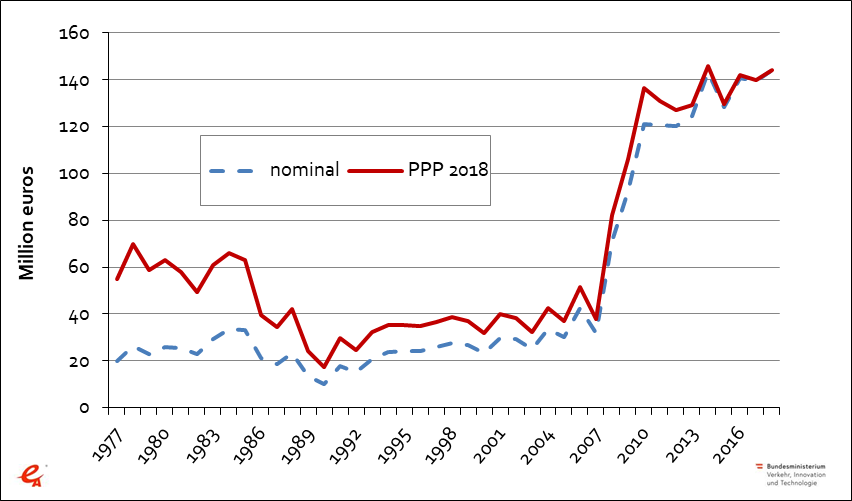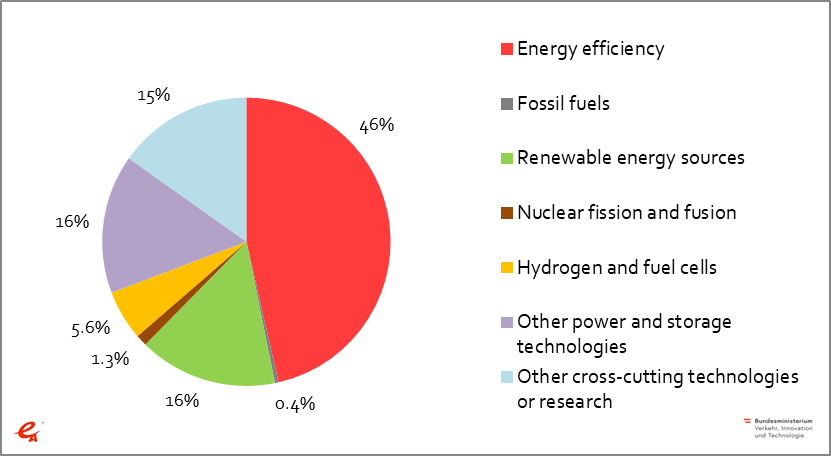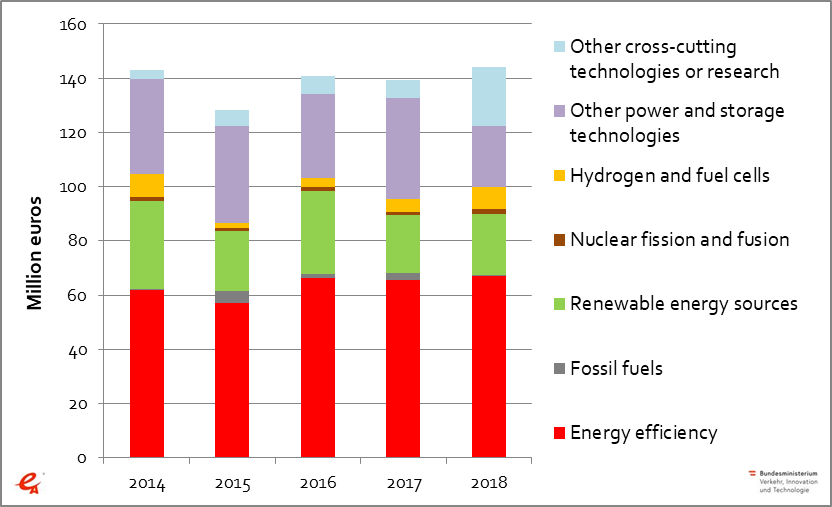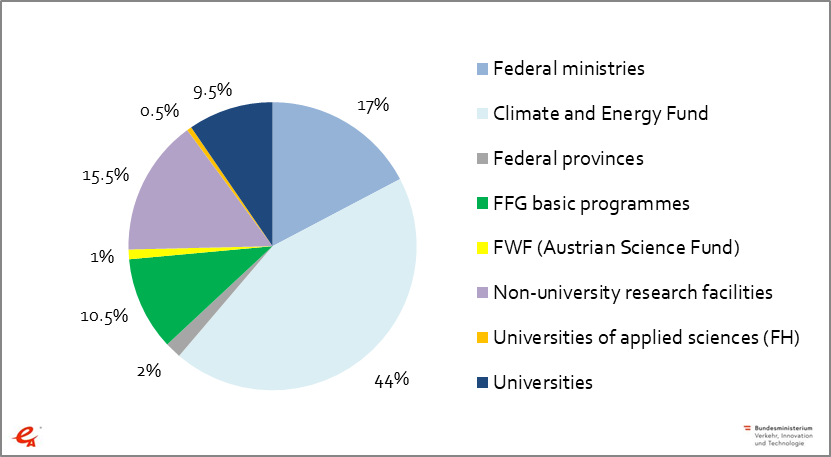Energy R&D 2018: Public Expenditures in Austria
Bibliographic Data
Energy Research Survey 19/2019A.Indinger, M.Katzenschlager
Publisher: BMVIT
German, 136 pages
Content Description
In 2018 about 1,000 projects and activities for publicly funded energy-related research, development and first-of-a-kind demonstration were registered, which amounted to 144.1 million euros, increasing the expenditures of 2017 by 4.7 million euros or 3.4%.
72.7% of the means were used for applied research and 14.7% for experimental development. Expenditures for first-of-a-kind demonstration amounted to 6.4% in 2018; basic research summed up to 6.2%.
Being a member of the International Energy Agency (IEA), Austria is obliged to yearly record all energy-related research, development and first-of-a-kind demonstration projects, which are supported and financed by means of public funds. The Austrian Energy Agency has been appointed by the Federal Ministry of Transport, Innovation and Technology (BMVIT) to gather and evaluate the relevant data. This annual survey is not only an international obligation but also allows emphasising the importance of energy research for Austria as well as creating and checking policy goals.
The research areas of energy efficiency, smart grids, storage and renewables define the priorities of the publicly financed energy research in Austria. 66.9 million euros of the expenditures were used for the sector "energy efficiency" in 2018, followed by power & storage technologies as well as renewables, both totalling 22.4 million euros each. The area "Other cross-cutting technologies or research" follows with 21.9 million euros, including mainly large projects of the Austrian Climate and Energy Fund's "Flagship Region Energy" each addressing various sectors.
Smart grids as well as storage technologies saw substantial reductions in 2018 – but this result was more than compensated by the threefold increase of multi-sector projects (listed under "Other cross-cutting...") and some 7.4 million euros in hydrogen R&D. The remaining areas of fossil fuels and nuclear energy do not represent priorities of publicly financed energy research in Austria.
About three quarters of these expenditures were provided by funding authorities; the remaining part came from (publicly funded) research institutions and universities provided with equity capital. No third-party financing from industry or means from European programmes like Horizon 2020 were covered by this survey.
Due to several energy research programmes, the Climate and Energy Fund spent 63.3 million euros in 2018, which represents both a substantial increase compared to 2017 as well as the highest amount since the fund's start in 2007. The Climate and Energy Fund is the institution which has annually provided the highest amount of finance for energy R&D since its beginnings.
The expenditures of the federal ministries – either directly or via programmes within their fields of responsibility (excluding the Climate and Energy Fund) – totalled up to 24.9 million euros, with the Federal Ministry of Transport, Innovation and Technology investing about 63% of that amount. The Austrian Research Promotion Agency (FFG) as the national funding agency for industrial research and development provided 15.7 million euros with its permanently open calls of general programmes. In addition to that, the FFG is carrying out a bundle of thematic and structural programmes on behalf of ministries and the Climate and Energy Fund.
The total expenditures of the nine federal provinces of Austria – with Tyrol's 0.8 million euros in the lead in 2018 – decreased substantially to 2.6 million euros.
The expenditures of the non-university research institutions based on equity capital provided by the government were 22 million euros; the predominant part of this sum was invested by the Austrian Institute of Technology (AIT). Universities (led by Vienna's University of Technology) and also universities of applied sciences spent 13.7 and 0.8 million euros in equity capital, respectively.
Gender-specific project information was analysed for the first time. Data of 210 projects in 2018 with a total volume in funding of 93.2 million euros show the following results:
30 consortia are led by women (14%). Female leaders of consortia are responsible for projects with a share of 16.5% in total funding. The influence of the topic is strong, programme design plays a miner role. Women a better represented in the themes of smart cities, building technologies and renewables.
Downloads
- Report "Energy R&D 2018: Public Expenditures in Austria" (in German only) (php, 464 bytes)
- Presentation slides (pdf, 911.51 kB)




